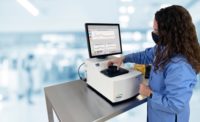Consistency is Key
By Andy Hanacek
Ingredient-handling equipment continues to help companies grow and keep high standards.
For companies in any industry to grow, they must increase capacities and speed, uphold a higher standard of quality and install a strong measure of consistency in the end products they produce. In the baking and snack manufacturing industries, all those things start with ingredient handling.
In the snack and bakery industries, most larger companies use some sort of ingredient-handling system already. Having such a system is necessary for them to keep up with the production goals.
Yet many of those manufacturers only have their bulk ingredients automated, says Bill Nesti, national sales manager for AZO, Inc.
“Companies are being driven to become more efficient, … but they’re still handling and scooping their minor [ingredients],” Nesti says. “To become more efficient and do more with less people or free up those people for more important tasks than material handling, the automation of those minor ingredients is something [in demand].”
In fact, AZO has recently developed a new system that will make automation of the handling of minor ingredients much easier. The DosiBox system is an economical way for companies to handle those ingredients with minimal downtime, labor and housekeeping efforts all while maximizing efficiency, accuracy of batching and consistency in the end product.
“If … there are 10, 20, 30 or 40 ingredients that could be used, but maybe six to 10 of them are used at any given production time, you can bring just those ingredients out in their DosiBoxes with the feeders built into them,” Nesti explains. “You could bring just those ingredients out, dock them to the batching system, batch away and … maybe in the next shift, you might … plug in eight or 10 new ingredients.”
Increased computer controls are another technological advance that ingredient-handling suppliers are trying to address, says Edward D. Brackman, vice president of sales at The Fred D. Pfening Co. Brackman says that the integration of functions has become an important priority in recent years, compared to earlier days when the flour system, liquid meters, and mixer each had its own controls and recipes were on clipboards.
“Nowadays, the recipe is a computer file and the ingredient drops, liquid amounts, and mix cycles are all integrated on a single touchscreen,” Brackman explains. “This is especially true on high speed lines in the snack food industry, which employs large-capacity, high-speed mixers with automated material handling both of the incoming ingredients and the outgoing dough. Handling thousands of pounds on cycles as short as seven minutes, a human operator simply cannot keep up.”
Pfening has addressed these needs by making PLC controls with Panelview touchscreens standard. Brackman adds that some of Pfening’s higher-end products instead have PC based touchscreens which offer greater flexibility and ease of programming. On top of that, records and data can be downloaded from the PLC to a desktop-based PC to allow for unlimited record-keeping and data storage.
Additionally, Pfening has developed a few new products and made alterations to others to meet the needs of its customers. The new Top Loading Bin Vent Dust Collector effectively lowers maintenance costs, and the Automatic Temperature Water Blender, which has three inlets to mix water from hot, city and chilled water supplies to deliver a specified outlet temperature, allows for higher and more consistent product quality, Brackman explains.
He adds that Pfening has developed several new rotor designs for its rotary feeders and airlocks, which will achieve greater ingredient-delivery accuracy when required, and the company also has made a number of changes to the Pfening Inline Pressure Sifter design to improve the ease of maintenance and durability of that line.


